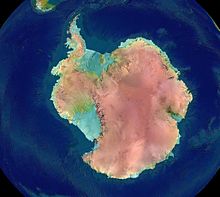| Research Title | .. | : | .. | Impact of Climate Change on Antarctica-Tropical Region. |
| Principal Investigator | .. | : | .. | Prof. Sr. Dr. Mazlan Hashim |
| Research Description | .. | : | .. | Over the past century, Antarctic region have been received much attention from International scientific community as it is a very |
| .. | .. | important region of land-ocean-atmosphere interaction. Antarctica’s ice, rocks and living material contain a treasure trove of information on Earth’s history and the evolution of life. Although geographically remote, it affects the whole planet through its influence on the climate system and sea level. The circumpolar oceanic belt maintains as the hub of oceanic circulation. Hence, the Antarctic region plays a vital role in the global cycles of heat, water and carbon, which comprises the basis for the climate.The oceans are an important component of the overall earth system. The ocean has an extraordinary capacity to absorb heat – approximately one thousand times that of the atmosphere. A direct consequence of the oceans’ capacity to store heat (and gases) is that under climate change conditions the ocean can add very long delays to the climate system before coming into equilibrium. Depending on the particular water masses (and depth) the time delay may be decades to centuries to millennia. Physical variations in atmospheric and oceanic variables related to global climatic changse and anomalies can also be oberved in the tropical waters. The Indian Ocean Dipole (IOD) and ENSO are two of the most climatic anomalies strongly affect atmospheric and oceanic physical variables in the tropical ocean (Saji et al., 1999; Abram et al., 2003), particularly marginal and/or semi-enclosed waters in the equatorial region of south east Asian waters. Like in the Southern Ocean, how the ocean biology of south east Asian waters responses global climatic changes and anomalies is not well known understood. Ocean biology in terms of ocean primary production is one of the most important variables not only because of it determines ocean biogeochemical cycle, but also supporting marine fisheries production and hence can be used to delineate potential fishing ground. To elucidate spatial and temporal variations of ocean biological production in the Southern Ocean and south east Asian waters associated with climatic changes and anomalies, satellite data from multi-sensors (optical, thermal, microwave) will be used in this study. Established primary and fisheries production model will also be applied to asses ocean primary and fisheries productions in the Southern Ocean and south east Asian waters.Global climate changes and climate anomaly give impact to the atmosphere as air pollutants are easily transported across countries. Increased human-induced emission of air polluntant play a major role in atmospheric-induced global warming factor. The global warming in Antarctic lead to the serious issue of the rise in water level. Previous studies addressed the exist of ozone hole formed in the Antartica stratosphere that caused by the man-made emissions of ozone-depleting chemicals (ODCs). In fact ozone depletion is defined as the driving force of global warming in Antarctic. Besides, air pollutants are transported primarily from Tropics and Australasia, leading to potential high concentration in winter and spring. Exploration ship emissions and forest fires may also be imporant pollution origins. Basically, aerosols and ozones are the main parameters that potentially perturb the radiative budget of the Antarctic through solar absorption and surface albedo. Observation of global warming trends is necessary and this can be done by remote sensing as precursory warming trends can be priorily detected. Aerosol and other trace gases are subject to air quality induced parameters and they are independently interact with the electromagnetic spectrum (EMR). This allow remote sensing to trace these air pollutants by means of their optical, chemical and micro-physical properties. High number of multi-sensor satellites for atmospheric observation have launched to space in various modes of measurement ranging from optical to microwave. Their distinct charactertics may result in different spatial, spectral and temporal resolutions. The major challenge is to synergize all satellite data with various and numerous modellings and inversion algorithms. Validating output of remote sensing is an issue as it must be carried out through correlating with ground measurement or in-house experiment. The in-situ must be provided in long period to obtain accuracy and expentency as high as possible. In-situ data could be acquired from existing ground-measurement station thanks to the network of aerosol monitoring mission such as AERONET.  This research will focus on the effect of complex interaction of the impacts beyond temperature variations has cause the occurrence of climate change where according to IPCC (Intergovernmental Panel on Climate Change) in its Assessment Report (2007), it is observed that since the last 20th century, global average surface temperature has been increasing by about 0.74±0.18 °C. As a result of the spatio-temporal distribution of runoff and water transformation will affect the sea level, yield production, the ecosystems and weather. The interchange of season from winter months to summer in the cold climate regions of the world such Australia, New Zealand, and Southen region contries observed that the increasing of temperature caused overflowing of water from the toe drain of dam site as naturally sloping areas that are covered with a layer of coarse rock often display lower ground temperatures as heat is extracted by convective during the winter allow permafrost to form in areas where the mean annual air temperature is above zero centigrade (Marc Lebaeau et al. 2008). In this proposed research project we will be using the latest modeling and computational platform based on the cloud computing technology. Dealing with large sparse and huge scale computational complexity, the cloud computing has te capability to monitor, observe, visualize and animate the natural phenomena of the antarctica climate change. The architechture will support the large repository of UTM repository antarctica software. |
+6 07-553 0611
insteg@utm.my